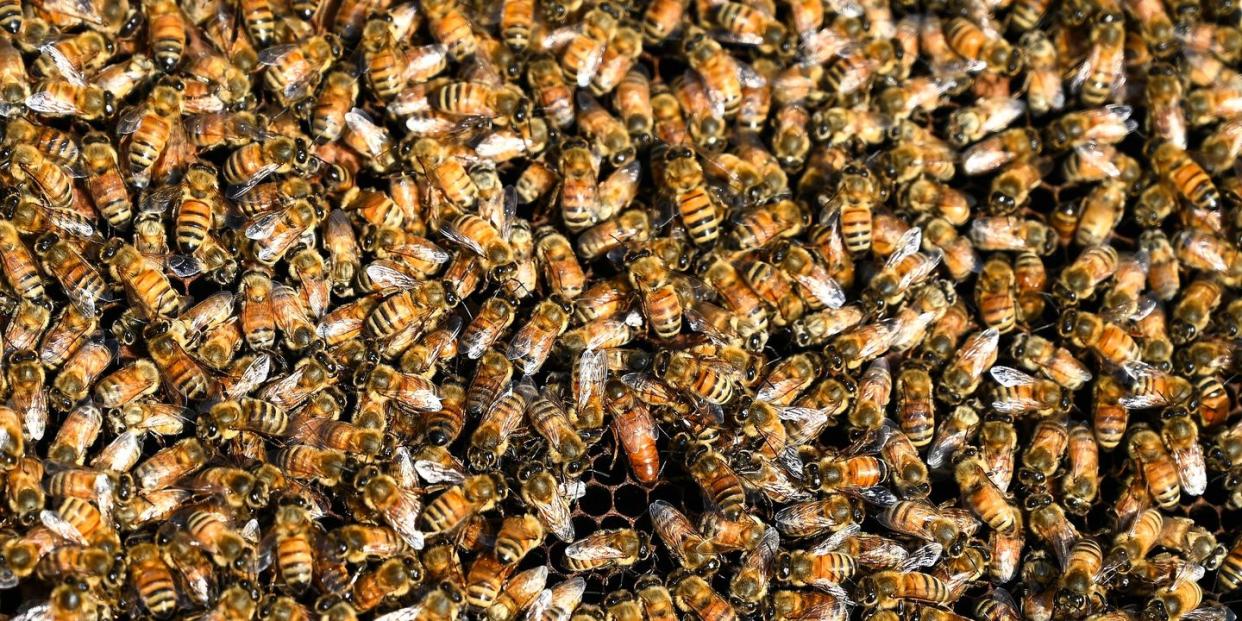Actually, All Bees Come From an Ancient Supercontinent Called Gondwana

A new study claims that the origin of bees is tens of millions of years older than previously believed.
The supercontinent of Gondwana had bees before it broke apart into Africa and South America.
A southern hemisphere origin of bees fits with the understood growth of plant groups.
Before Africa and South America became two distinct places, scientists believe that the land was connected, and formed the ancient supercontinent of Gondwana. That supercontinent’s historical intrigue just got upped by a group of researchers, who claim that it was the birthplace of bees—tens of millions of years earlier than anyone thought the insect existed.
“For the first time, we have statistical evidence that bees originated on Gondwana,” Silas Bossert, assistant professor with Washington State University’s Department of Entomology, who co-led a research project with Eduardo Almeida, associate professor at the University of São Paulo, says in a news release. “We now know that bees are originally southern hemisphere insects.”
The researchers claim that bees likely originated a full 120 million years ago, far deeper into history than anyone had previously believed.
The study, published in the journal Current Biology, lays out how the researchers sequenced the genes of 200-plus bee species and then compared those genetic sequences with 185 different bee fossils. It all worked to craft an evolutionary history that expanded into a genealogical model for historical bee distribution.
“This is the first time we have broad genome-scale data for all seven bee families,” Elizabeth Murray, a WSU assistant professor entomology, says in a news release.
With this bee-centric study, we get far more than just a new history lesson on the origin of bees. We also get an understanding of their evolution, and how that evolution impacted plant life.
The study claims that bees arose in arid regions of western Gondwana during the early Cretaceous period, and as new continents formed, the insects went with them. Moving north, the bees helped diversify and spread in a “parallel partnership with angiosperms, the flowering plants.”
The spread of plants, then, was largely thanks to the work of bees. They truly were the bee’s knees in terms of encouraging flora diversity.
Building on the belief that bees broke away from the predatory wasp to become collectors of nectar and pollen, the western hemisphere’s flora-rich tropical regions could be thanks to bees. The authors highlight that a quarter of all flowering plants belong to the rose family, and the thanks belongs to the bees for helping to spread these plants in both tropical and temperate areas.
Bee movement first started north, then expanded. “The early evolution of any major bee lineage is associated with either the South American or African land masses,” the authors wrote in the study. “Subsequently, bees colonized northern continents via a complex history of vicariance and dispersal.”
The lag between bees going from south to north and then later to India and Australia offers important implications, the authors write, for understanding the assembly of local floras and diverse modes of pollination.
Even with a delay—with all major families of bees splitting off prior to the dawn of the Tertiary period, roughly 65 million years ago—bees established themselves about the same time that dinosaurs became extinct.
By helping to unlock the bee-rich history of Gondwana, Murray believes that this research opens opportunity for more work on understanding bee movement and influence.
You Might Also Like
